Aircraft Operators: Improving Tracking of Your Flights on FlightAware
FlightAware's global flight tracking is a complex task. We strive to provide the most comprehensive data by fusing hundreds of data sources. To ensure we are processing the best possible data, we publish the following best practices and tools to ensure optional flight tracking coverage of your flight operations. Please feel free to contact us for any assistance or with feedback.
Resources for Aircraft Operators:Transponder
FlightAware operates a worldwide network of Mode S/ADS-B receivers. In addition to typical secondary surveillance data, FlightAware receives the flight identification that is typed into the transponder or flight management system (FMS).
When entering the flight identification into your transponder or FMS, it is important to use the exact ident that is filed on the flight plan. For example, if operating Delta Airlines flight 123, enter DAL123 and not DL123, 123, DELTA123, or the tail number. type in the correct number. Leading zeros (e.g., DAL0123) are accepted but not necessary.
Best flight tracking is provided to aircraft equipped with 1090MHz ADS-B out.
Call Sign Similarity (CSS) / Call Sign Disambiguation (CSD)
Operators that use call sign similarity (CSS) tools to operate flights as a call sign rather than a flight number should send their ident/flight # mappings to FlightAware. FlightAware supports a simple comma separated value (CSV) format called FlightAware Call Sign Disambiguation (FACSD) that can be exported in Excel or from any standard operational/scheduling system.
The first line of the FACSD file is a header that should contain, in CSV format, header fields in the following order:
- Format name: FACSD
- Version number: 1.0
- Flight ident style: ICAO (e.g., SIN) or IATA (e.g., SQ)
- Airport code style: ICAO (e.g., LFPG) or IATA (e.g., CDG)
Each subsequent line is a flight mapping in CSV format in the following order:
- Published Flight Identifier (e.g., BAW123)
- Origin Airport Code (in format speciifed above)
- Destination Airport Code (in format speciifed above)
- Call Sign (e.g., BAW24G)
- Effective From Date (local to flight origin)
- Effective To (End) Date (local to flight origin)
Example #1 (ICAO ident, ICAO Airport Code) - Preferred
FACSD,1.0,ICAO,ICAO
BAW123,KIAH,EGLL,BAW24G,01FEB17,31AUG17
BAW124,EGLL,KIAH,BAW3L,01FEB17,31AUG17
Example #2 (ICAO ident, IATA Airport Code)
FACSD,1.0,ICAO,IATA
BAW123,IAH,LHR,BAW24G,01FEB17,31AUG17
BAW124,LHR,IAH,BAW3L,01FEB17,31AUG17
Example #3 (IATA ident, ICAO Airport Code)
FACSD,1.0,IATA,ICAO
BA123,KIAH,EGLL,BAW24G,01FEB17,31AUG17
BA124,EGLL,KIAH,BAW3L,01FEB17,31AUG17
Example #4 (IATA ident, IATA Airport Code)
FACSD,1.0,IATA,IATA
BA123,IAH,LHR,BAW24G,01FEB17,31AUG17
BA124,LHR,IAH,BAW3L,01FEB17,31AUG17
You can email the CSV file in the body of a message or as an attachment to airlinedata@flightaware.com. Please allow one business day for processing.
Datalink Position Reports
- ARINC
- ARINCDirect
- Honeywell GDC
- Satcom Direct
- SITA
- UVdatalink
Please contact us to setup integration of your worldwide position reports If your aircraft is not datalink equipped, we support a number of Iridium partners and can help find and setup a worldwide, low cost position report service.
IFR Flight Plans
Although we do support position-only flight tracking, our systems work best when we have a flight plan. Accordingly, we recommend filing and flying IFR, even for local, re-positioning, and test flights.
In FIRs outside of US/Canada/Europe/Australia/New Zealand where we do not receive flight plans from the ANSP, customers of FlightAware Global can use the FlightAware Flight Plan Advisory System (FPAS) to enter the summary of a VFR or IFR flight. High volume operators can contact us for API access to FPAS that can accept automated exports from your scheduling, dispatch, or filing system.
Airline SSIM Flight Schedules
Airline flight schedules can be used in lieu of IFR flight plans when other position sources are available, such as ADS-B or datalink.
FlightAware currently receives monthly flight schedules from OAG. Carriers desiring more frequent updates can send their schedules in IATA SSIM format to airlinedata@flightaware.com as frequently as schedules change.
Airline OOOI and FLIFO Data
Other Flight Tracking Best Practices
- Minimize the re-use of flight numbers within a calendar day.
- When re-using flight numbers, do not re-use a flight number for the same origin in the same calendar day.
- When re-using flight numbers, if there is potential for overlap, re-number the flight rather than adding a suffix letter.
- For private/charter operators, do not use call signs as an attempt to conceal the identity of an aircraft; aircraft tail/registration data is automatically derived. If the need exists, contact us regarding selective blocking.
- If it is determined that a scheduled airline non-stop flight will require a technical stop, it is preferable to file IFR from the normal origin to the normal destination, then divert to the tech stop location (anytime in air), then file a new flight plan from the tech stop location to the destination. It is not recommended to file two flight plans prior to departure because it will not match the scheduled destination.
- For datalink equipped aircraft, do not release the parking brake prior to commencing push-back or taxi.
- Do not cancel IFR prior to landing.


